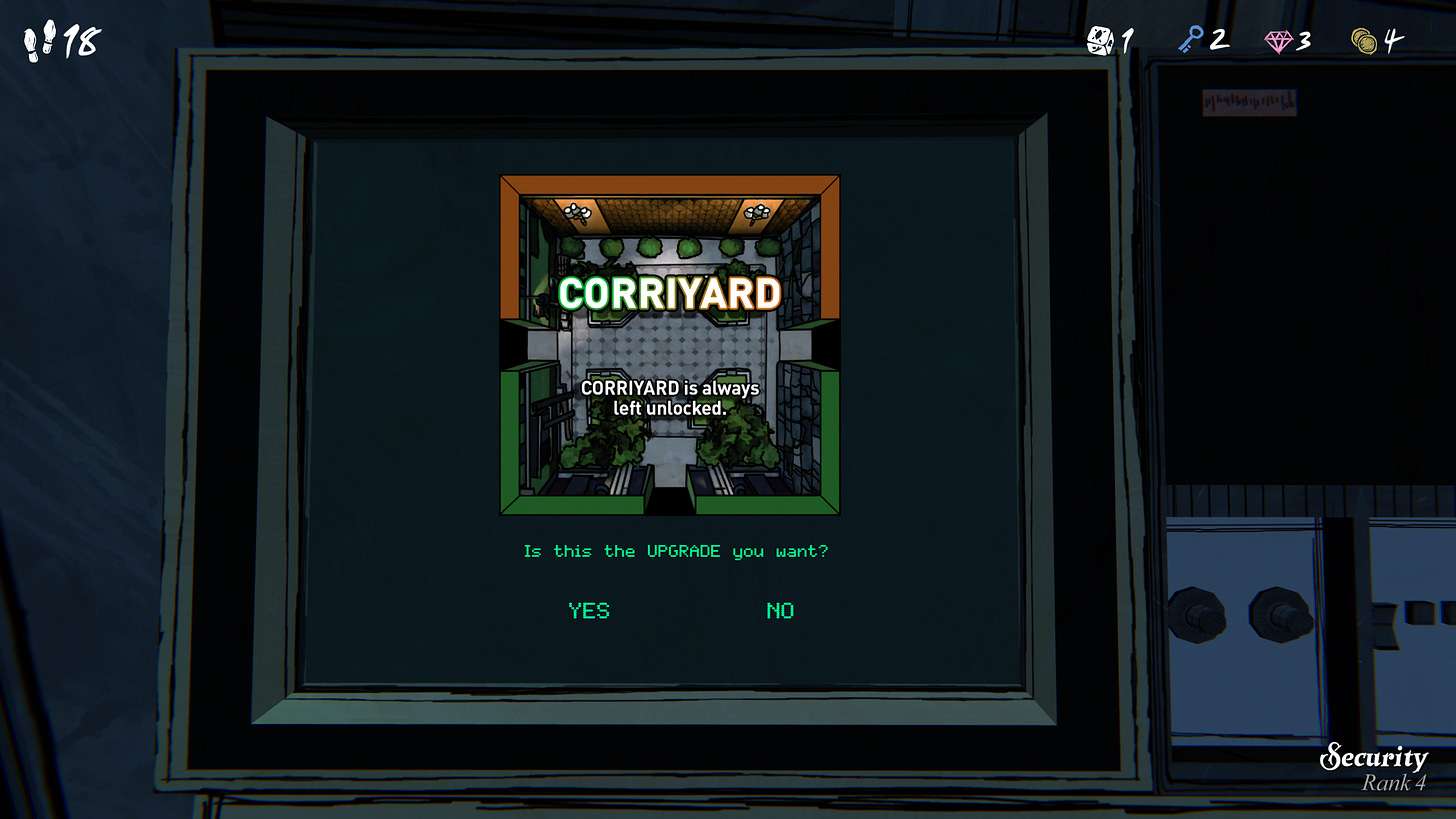Blue Prince? Blueprints.
By now, many of you have played, or at least heard of, Blue Prince (I honestly did not understand the word play until I started trying to write the headline for this post). It has a LOT of early game-of-the-year buzz, and it is honestly difficult to see any other game taking that title so far. The moment I finished Indiana Jones (architecture review incoming?) I downloaded this game (it’s been a good month for gamepass for me), and the game hooked my architecture-addled brain.
Blue Prince is a game that borrows mechanisms from many video games and board games, which coalesce into fascinating decisions about space planning, resource management, and prospect. It uses tile laying from board games like Castles of Mad King Ludwig and Betrayal at House on the Hill, then combines it with roguelite drafting mechanisms and some deck building to work your way through your deck of tiles (more on that later). In many ways, this game exercises architect muscles in a safe space that also rewards those thoughts frequently and meaningfully.
Comparisons are floating around about Blue Prince and Outer Wilds (GOAT), but I do not think this game feels much like Outer Wilds. It is much closer to The Witness in its reverence for architecture and its layered puzzles that grow and morph as you begin to understand them, as well as its sprinkling of lore through these abandoned rooms. Blue Prince feels less like communion with the universe a la Outer Wilds and more like manipulating and crafting your world to fit your needs. What is an architect if not one that crafts the world to fit our needs?
Space Planning
Each run of Blue Prince starts in the foyer with 3 directions one can go. After approaching a door three room tiles are revealed, and the entire game is deciding which of these rooms makes the most sense to go adjacent to the current room AND how that room can help achieve goals in the future. Each of these rooms contains interesting experiences that are plump with minigames, puzzles, lore, and sometimes an awe-inspiring view. Do we really want three closets off the foyer? Of course not, that would finish your building excruciatingly quickly. It is easy to tune your building too tightly providing no flexibility, ending your promising run right before you get to the meet of the game. The entire idea is to build a solid design that leaves you options for rooms that might not make sense. Anyone that has laid out a building knows that this type of flexibility in design is critical to laying out complex building program, which is important in games like the Castles of Mad King Ludwig (which is why I recommended that game in my first ever Substack).
Resource Management
Architecture is as much about managing resources as it is about actually designing a structure. Understanding material limitations, shipping logistics, budget considerations are part of the chaotic mess that is the project delivery process. While there are efficiencies to be had, those rarely gel with client realities and design schedules that are increasingly compressed. Success within this process is understanding how to manipulate and order these resources so that you have what you need when you need it amidst the chaos, rather than trying to get everything out the door as quickly as possible.
The way Blue Prince presents plenty of opportunities for every single tile to be successful and every single tile to be completely worthless. A dead end that is going to make me draw more red tiles? No thanks… except, because I have an experiment that gives me extra crap when I place red rooms.
Prospect
There are many times in this game that placing a tile is about the experience within that tile and not about advancing a particular goal. Prospect is the most commonly missing element from bad architecture. A building, regardless of how expertly detailed and built, needs to have some kind of prospect to elevate it to architecture. There needs to be interplay with users for it to cross that line even if it goes against resource management goals or gums up the space planning.
This is where Blue Prince shines the most. There are a number of times I had a promising run I sacrificed because I got a rare tile that I had never seen. Perfect runs are meant to end with the office or the Lady’s bedchamber, because these are important spaces. It is the embodiment of “it’s the journey not the destination.”
Though I completed the main goal of Blue Prince, there are many massive puzzles I have yet to solve, adventures to experience, and stories to hear.
Postscript
This game also has Cross programming!








